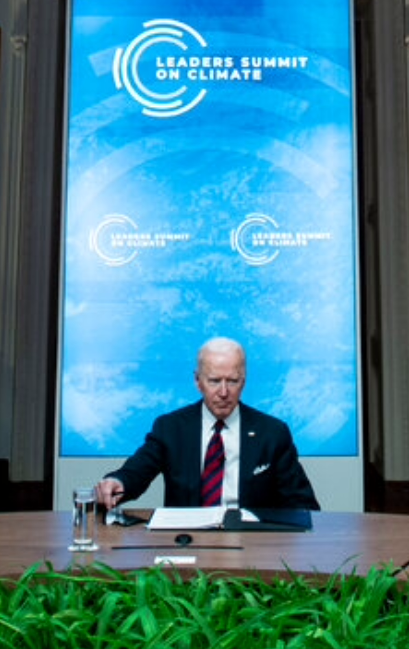
An Earth Day for the Ages
By: Chandu Visweswariah
No. 46 outdid himself on Earth Day 51!
The publication of Rachel Carlson’s book “Silent Spring” in 1962 led to the first Earth Day in 1970. Just last week, we celebrated Earth Day number 51. In our household, Earth Day has always had special significance because our first date with my wife was on Earth Day 1990. Beyond that, however, Earth Day has been disappointing – a long string of speeches and big intentions, but little real action.
Until last Thursday when President Biden took CURE100’s mission nationwide!
Our 46th President and his administration, ending four years of official climate denial, announced at a 40-country climate summit that the United States would rejoin the Paris Accord and reduce Greenhouse Gas (GHG) emissions 50% by 2030. This milestone has particular significance, because according to the Inter-governmental Panel on Climate Change (IPCC) it is a “must have” on our path to limiting global warming to 1.5 degrees Centigrade. The Biden administration characterized the announcement as both a “moral imperative and an economic imperative.”

The specific announcement was a target of 50% to 52% GHG reduction by 2030, using 2005 emissions as the baseline.
Without doubt this goal is an ambitious one and will have sweeping impacts on all aspects of society, especially domains like energy, transportation, agriculture, manufacturing and building energy. As explained in my previous blog, low-hanging fruit like renewable electricity, light-duty vehicle electrification, energy efficiency measures and rapid adoption of heat pumps must be executed rapidly in this decade to meet the goal. More difficult sectors like cement, mining, steel making, air travel, shipping and upgrade of the building stock will have to wait till the decade of the 2030s for completion and have dependencies on as-yet unknown or unproven innovations.
Reaction has been positive and even giddy. From Ursula von der Leyen, head of the European Commission, “The Paris Agreement is humanity’s life insurance. It is so good to have the U.S. back on our side.” However, not all reactions are positive. For one thing, the announcement is only a plan or a target, it is not codified in legislation. For another, the plan is skimpy on specifics which will presumably be announced in the coming days and weeks. “This radical plan is a domestic and foreign policy blunder of almost unfathomable proportions,” said Patrick Morrisey, attorney general of West Virginia – a statement that he will likely regret for as long as he lives.
Environmental groups have reacted positively as well, including a warm endorsement by former Vice President Al Gore, but not without exceptions. Our Children’s Trust and Extinction Rebellion favor 100% GHG reduction by 2030 and 2025, respectively, to keep the probability of environmental disaster as close to zero as possible. There is the ever-present question, of course, of how to get all countries to meet GHG reduction goals at the same cadence. An open topic is what kind of help can and must be provided to developing nations to decarbonize.
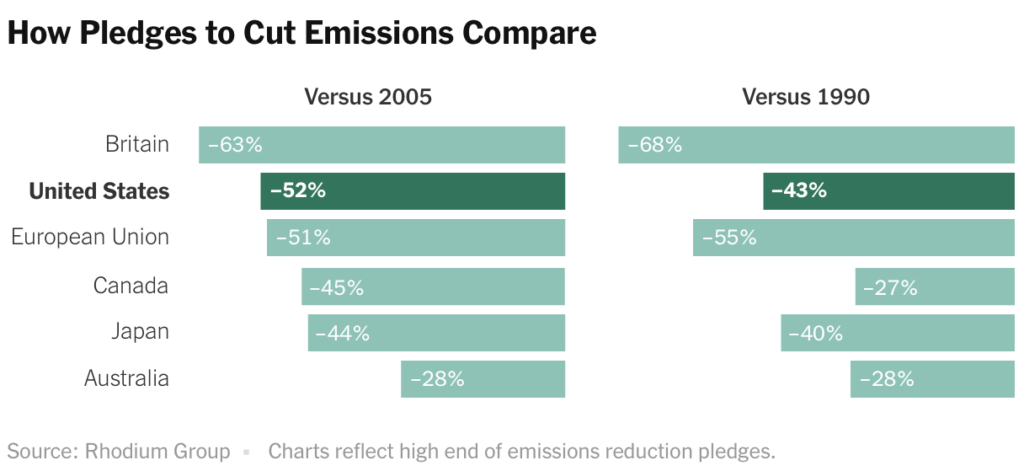
In rapid succession, several other countries announced new GHG targets including Japan (46 to 50% reduction from 2013 levels), Canada (40 to 45% reduction from 2005 levels), Britain and the European Union. Significantly, the U.K. announced the most far-reaching goal of 78% GHG reduction by 2035. Not only is Britain’s ambition codified in legislation, but it also appears to be far more prescriptive than other countries (see image below).
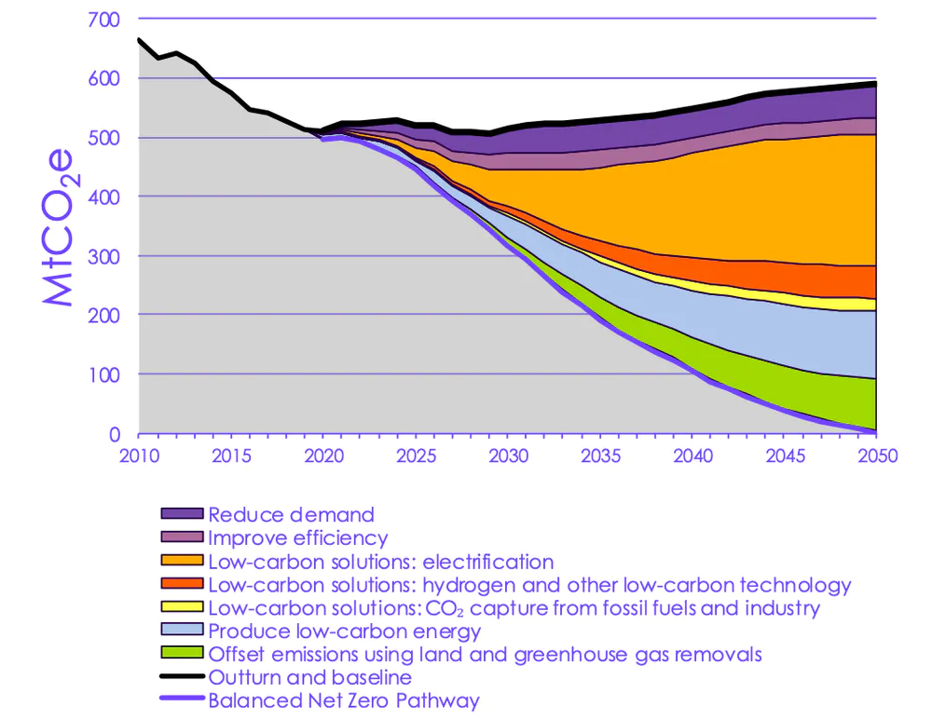
In CURE100 and Croton100, we’ve been very clear about the goal of cutting GHG in half by 2030 and achieving net zero by 2040. If the U.S. can achieve 50% reduction by 2030 and the U.K. will reduce 78% by 2035, net zero by 2040 seems only a hop, skip and a jump farther!
A lingering question on many minds is, “Will success require a top-down effort or a bottom-up effort?” The answer is a resounding, “Both.” We need Federal and State Governments to push, fund, subsidize and enact policy, but we also need every household and every community to do what it can – and the sooner the better. Hence, I am choosing to end this brimming-with-hope blog with a recap of Earth Week activities much closer to home.
All the chapters of CURE100 had multiple Earth Week events. Special mention goes to Ossining100 which hosted more than 70 events! Philipstown100 and Port Washington 100 launched their programs, including the Carbon Tracker. Croton100 organized seven Earth Week activities that are worth mentioning:
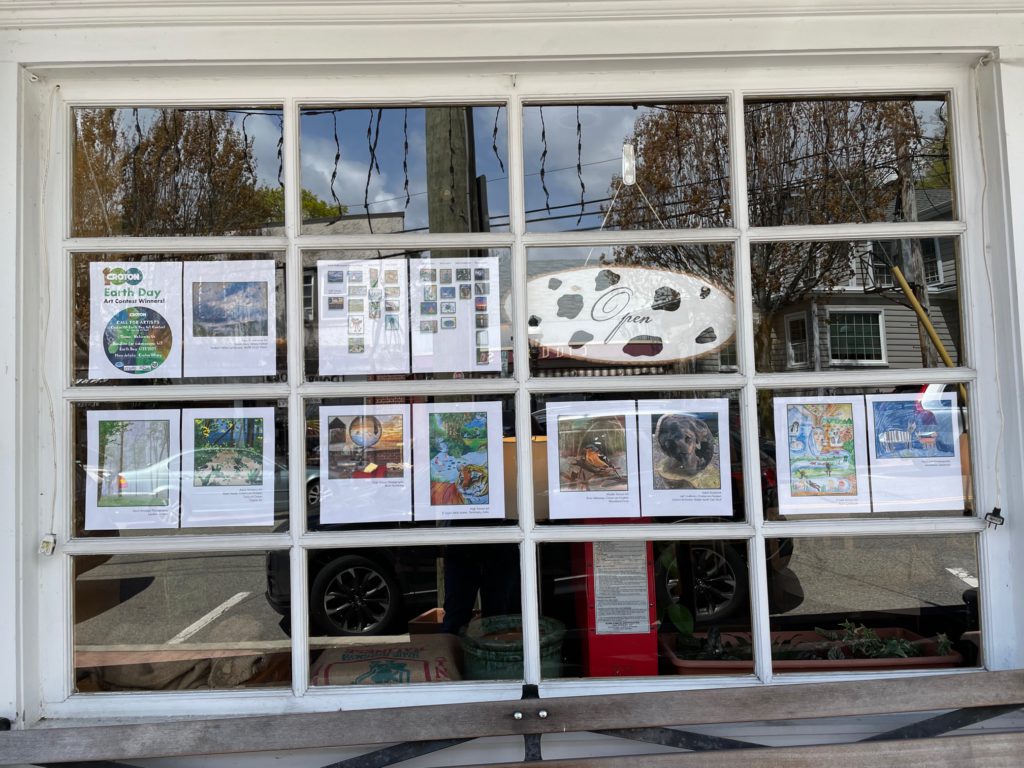
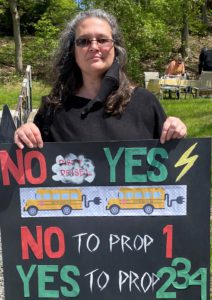
- Croton100 announced winners of its Earth Day art contest with “Nature is Us” as the theme, seen here exhibited in the window of our local coffee shop, the Black Cow. Entries came from as far away as India and Turkey. Croton100 is on the global stage!
- Croton100 is running a campaign to say NO to diesel school buses (Proposition 1) and YES to electric school buses (Propositions 2, 3 and 4). School officials and Croton100 volunteers got to ride through the village in a demonstration electric bus provided by Lion Electric.
- Croton100, together with local High School Student Molly Levitt, arranged presentations at Croton Harmon High School in the Environmental Science AP class of Ms. Pappalardo on the theme of “Green Careers.” Both sessions were appreciated by the students who heard from several residents who live or work in Croton with careers in various aspects of sustainability.
- Croton100 unveiled on its website and social media an array of 10 profiles of “Decarbonizing Hero” residents and the various ways neighbors are influencing neighbors to reduce carbon.
- Croton100 participated in a panel presentation for an impressive Westchester County wide group, Impact100 Westchester. We explained Croton100’s founding, mission, collaboration with other communities and our how our Carbon Tracker can help build carbon literacy. A reporter from the Peekskill Herald who attended the event found it compelling and published an article about CURE100 and the Carbon Tracker on Earth Day.
- We also celebrated our first Carbon Tracker corporate license agreement with Meketa Investment Group, which is a financial services consulting firm that advises big investors who care about Environmental, Social and Governance (ESG) values when investing.
- Aligning itself with the Village Sustainability Committee and environmental groups around the state, Croton100 submitted a letter of support for state legislation to allow for solar canopy installations in county parking lots, like Croton Point and Croton Landing.
I don’t know about you, but after years and years of being beaten down with bad news on the environmental doorstep, I feel pretty good about this past week. Good news from Washington, good news from Seoul, Tokyo, London, Beijing and Ottawa. And the feeling that all our efforts on a local level in tiny Croton-on-Hudson, New York and all over the world are coming together to make a difference! So, let’s kick back, celebrate, let some relief wash over us, even take a day off – and then re-dedicate ourselves to the 19-year decarbonization road ahead with new vigor and hope!
8 thoughts on “An Earth Day for the Ages”
Leave a Reply Cancel reply
You must be logged in to post a comment.


Thanks for this, Chandu! Very encouraging progress. Thanks for all your work and leadership. Yours, Davis
Thank you for this take Chandu, I was waiting for it! I almost levitated when I saw the news last Thursday.
A question though…
The pledges are for 50% reduction compared to 2005 levels (USA, Canada) and 2013 levels for Japan. I can’t imagine 2005 levels are halfway between current emissions and net zero! What gives?
I would love to have been a fly on the wall and witness your act of almost levitating! 🙂
More seriously, 2005 levels (USA, Canada) and 2013 levels (Japan) are baselines. Thus, they are the HIGHEST carbon number. From 2005 till today, most countries have achieved a modest carbon reduction, but of course nowhere near enough. So today’s number is LOWER than the base line by a little. Then the US has a 2025 goal of 26 to 28% reduction with respect to the baseline — that is the Obama goal, which is even lower than today’s carbon number since we haven’t achieved that much reduction yet. Then we have the latest announcements, which are lower still. So imagine a downward curve (see the UK curve in the blog for example) with shallow amounts of improvement from baseline till today, slightly steeper reduction till 2025 and then much steeper reductions to meet 2030 goals. And since the UK has passed into law its 2035 target, we know they will keep on that steep trajectory from 2030 to 2035 as well. All of which is good news (although not steep enough for certain environmental groups, as I explained in the blog). I hope this explanation helps.
Yes, thank you Obiwan 🙂
Great post and congrats and thanks to CROTON 100 and CURE 100 for your drive, leadership, future-thinking and- above all- for your work towards an equitable, just, loving, and clean world and atmosphere for us all!
Thank you Andrea! Please consider signing up to be notified whenever there’s a new blog at cure100.org/blog.
Feel hopeful! I will participate in the Botton upwards movement wherever I can!
Thank you, climate action leaders!
Eleanor
Thank you Eleanor! This battle will be lost and won by us foot soldiers helping the bottoms-up movement.